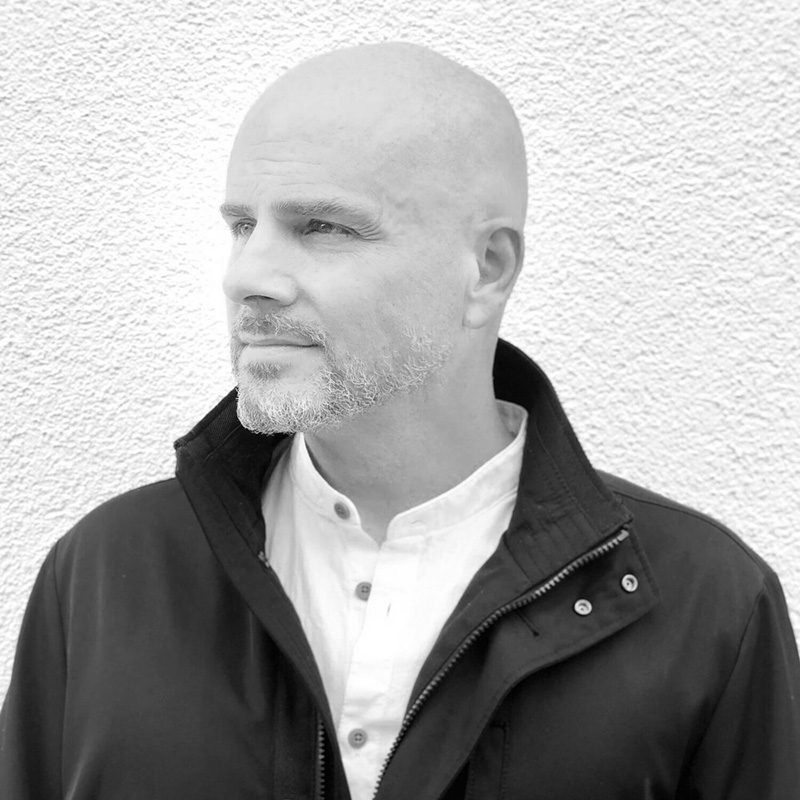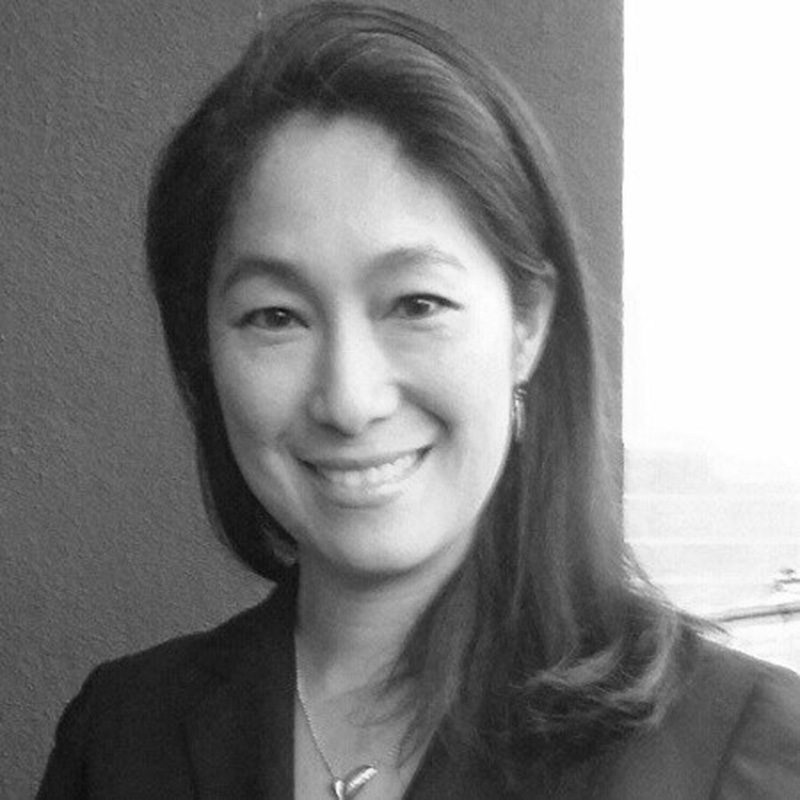

Designing Against Extinction With Terreform One
December 10, 2019 | Mitchell Joachim and Vivian Kuan
Terreform ONE was founded more than a decade ago to find solutions to cities’ environmental challenges by merging education, design, research, public outreach and science, with a concentration on socio-ecological design. Mitchell Joachim and Vivian Kuan spoke with DesignIntelligence about their organization’s focus and how we can all make a difference in designing a future that protects our planet’s living species.
DesignIntelligence (DI): How did Terreform ONE recently come to focus on species extinction?
Mitchell Joachim (MJ): Terreform always focused on climate and environmental issues; it was number one for us. We came to realize our primary goal was to save ourselves from wiping our entire society — globally — off this planet forever. We’re doing that by killing everything around us. Every seven minutes, we seem to wipe another species off the face of the earth. Statistics say roughly 50-60% of all life on this planet just disappeared. Architects, urban designers, planners, developers and anyone in and around this field are all somehow complicit in this. Our credo became “design against extinction” to express our desire to stop this kind of insanity. We’re now in the process of orientation realignment.
Vivian Kuan (VK): The complex interdependence of our ecosystem often gets overshadowed by a focus on the technical side of the climate crisis and global warming. Part of our nonprofit vision is to raise awareness and increase public outreach by engaging the public in discourse about our ecosystem and its connection to human and living species. We continually refine our mission in light of the changing conditions of our built and natural environment. The term “sustainability” doesn’t capture the urgency of what is needed at this point. So, we’ve reset “species extinction” as the ultimate consequence of the trajectory that we are on. It is a new bar, a higher bar that encompasses all living species that are endangered as a result of the climate crisis and our human actions.
MJ: There’s no way any one group is going to solve this problem; we’re on the tip of the spear, but we need a lot of other soldiers, generals and thought leaders to be critical of the things we’re doing and that others are doing. Everyone should be involved in this dialogue to get ourselves out of this problem we created.
DI: As a society, how should we define our responsibility in our relationship to the environment and other species? What does the right relationship look like?
MJ: I don’t think we — and “we” meaning as many people as possible — really like changing our behaviors. We like keeping business as usual. I’m not an advocate for changing our base behavior because it’s not going to work. I think it comes down to the design and engineering fields to re-think the products we produce, the artifacts we make and the buildings we design. We need an understanding of the earth’s metabolism and the life cycle of the opportunities we create. We need to make sure these things return appropriately to the earth and do it in a way that makes some financial sense. It’s hard to do, but it’s definitely possible. It’s certainly possible to show the math in the long term, and even the mid-term gains. The big fight will be surrounding the design of energy systems — the big carbon question is the killer at the moment. We need new narratives about living in a civilization with green and renewable energy systems that make sense with our economies, both global and local.
DI: What are examples of successful approaches to the type of environmental challenges you work on?
VK: Our “socio-ecological” approach uses a research-based design process to bridge the gap between a society that is dominated by data/technology, and the need for living things to connect to nature. One example is our recent monarch sanctuary project in the Cooper Hewitt, Smithsonian Design Museum Triennial Exhibit; it’s a double-skinned façade that is a biome way-station for monarch butterflies. Monarch butterflies are facing the risk of extinction in large part due to habitat loss and in particular, the loss of their main food source, milkweed.
However, the project is really a call to action for architects, designers, developers and owners to find novel and innovative ways to integrate nature into cities, architecture, buildings and communities because we need to address biodiversity loss, which will ultimately affect the quality of urban living.
Teamwork is and will become more and more critical to resolving the growing complexity of our environmental issues. For this project, we worked with BASF’s material scientists to help create super-sustainable concrete panels with a smaller carbon footprint; it’s a concrete product that’s not even on the market. BASF scientists were able to replace cement content with recovered waste materials like fly ash and improve flowability using innovative admixtures so the material was moldable and easy for designers to adapt to their imaginations. The project also gave us an opportunity to experiment with different recyclable materials and not rely on the traditional material methods and means. There’s a lot more ways to increase the range of sustainable biomaterials we can use in the construction industry that are healthier for the environment.
DI: What role can architects, designers, engineers, contractors and others who create the built environment play in preserving species and a healthy ecosystem?
VK: Since we are arguably at or beyond the tipping point of the climate crisis, we have an enormous challenge and opportunity in front of us as stewards of our built environment. Within the construction practice, green building certifications have exploded and yet biodiversity represents less than 5% of the targeted criteria. How can we convince clients and owners and even partners in our own firms to include research on biodiversity in every built project? It is a challenge but I’m optimistic that we have the skills and creative vision to accomplish this as long as the mindset exists.
The power of creative collaboration, working with various stakeholders outside of the A/E/C community and across sectors, will be a key element in bringing about the speed and scale of change necessary to preserve a healthy ecosystem. We hosted a design workshop for the Environmental Defense Fund to create pilot programs for air-quality monitoring across New York City, Houston and Los Angeles. Having corporations and city agencies at the same table to figure out how to align disparate incentives and use technology in innovative ways to improve air quality, was inspiring and productive.
MJ: We’re using imagination and design to help people realign their thinking and look at their base business models to push forward in a way that’s plausible. The workshops we do communicate that. Beyond the Environmental Defense Fund, we’ve done projects with BASF that involve entire communities of people: firemen, community activists, farmers, mid-level government officials, people concerned with job creation and other people who never participate in these kinds of things. Then we also bring in experts in planning and geography, landscape architecture and more. They are all speaking together about making a better place. Design is an incredible process that I still have faith in.
DI: Considering the enormity of the problems we face, and the scale of response needed to address them, what can each of us as individuals do to make a positive difference?
MJ: I think for anyone in this field, that’s our job. Architects and designers probably have the most understanding, awareness and neutral referendum to build up relationships between all the different parties and referee ourselves through these problems, so we have to be advocates at the front. I think it’s absolutely ingrained into the very structure of who we are.
We’ve got to do more for the environment, we’ve got to do more for biodiversity, and we can’t accept the old ways of doing things. At the same time, we really do need to listen to people who are resistant to this kind of change. I think that’s the key — it’s not so much about yourself promoting this, it’s actually about spending more time listening to why others are not interested in getting on board with it. That’s how you can craft your own belief system into a kind of power you can project. By listening to the opposition, we got through it, and we made something better. I think that’s my advice to others if they want to really invoke this platform.
VK: Individual mindset can make a difference. So much of our practice is very competitive, and we really need a different mindset to band together on this one goal of making a positive contribution to the environment. In an industry traditionally dominated by a network of large, global practices, we can leverage our combined resources so much more if we collaborate on this agenda, which is really a vision for greater good. The United Nations is leading the cause, so it’s not just the voice of design. We can join these other massive groups and do something to be on the right side of history for our field.
Dr. Mitchell Joachim is the Co-Founder of Terreform ONE and an Associate Professor of Practice at NYU. Formerly, he was an architect at the offices of Frank Gehry and I.M. Pei. He has been awarded a Fulbright Scholarship and fellowships with TED, Moshe Safdie, and Martin Society for Sustainability, MIT. He was chosen by Wired magazine for “The Smart List” and selected by Rolling Stone for “The 100 People Who Are Changing America.” Mitchell won many honors including: ARCHITECT R+D Award, AIA New York Urban Design Merit Award, 1st Place International Architecture Award, Victor Papanek Social Design Award, Zumtobel Group Award for Sustainability, History Channel lnfiniti Award for City of the Future, and Time magazine’s Best Invention with MIT Smart Cities Car. He’s featured as “The NOW 99” in Dwell magazine and “50 Under 50 Innovators of the 21st Century” by Images Publishers. He co-authored three books, “XXL-XS: New Directions in Ecological Design,” “Super Cells: Building with Biology,” and “Global Design: Elsewhere Envisioned.” His design work has been exhibited at MoMA and the Venice Biennale. He earned: Ph.D. at Massachusetts Institute of Technology, MAUD Harvard University, M.Arch. Columbia University.
Vivian Kuan is Executive Director at Terreform ONE. As an architect with an interdisciplinary background in art, architecture, real estate development and tech-marketing, she is dedicated to improving the future of our environment through impactful design and education. Vivian is currently faculty at Parsons in the Strategic Design and Management graduate program. She was a Launch Director at the incubator, idealab! and later directed the online strategy and e-commerce business units for the Estee Lauder Companies, Inc. and for The L’Oreal Group Inc. Before business school, Vivian worked as a project manager in Hong Kong for Sun Hung Kai Properties, Ltd., where she managed the conversion of the Ma Wan Island to a residential town complex and building towers in Hong Kong and China. She gained her foundation as an architect in New York City working on the Shanghai World Financial Center, Atlanta Federal Center, Taichung Tower and the IRS National Headquarters for Kohn Pedersen Fox Associates. She earned an MBA/M.A. at the Wharton School/ Lauder program, University of Pennsylvania, and B.Arch. from Cornell University.
